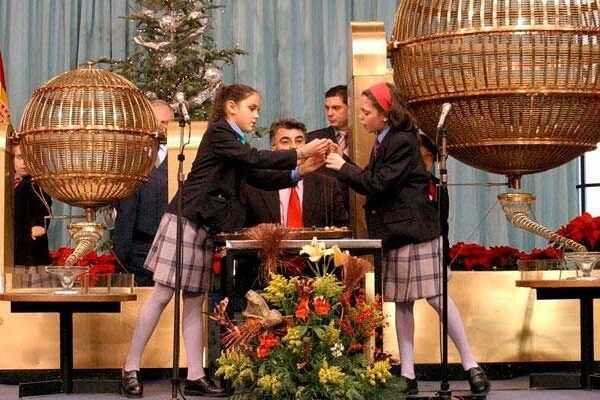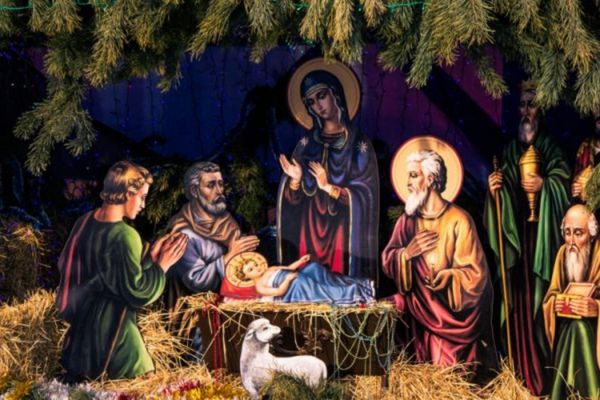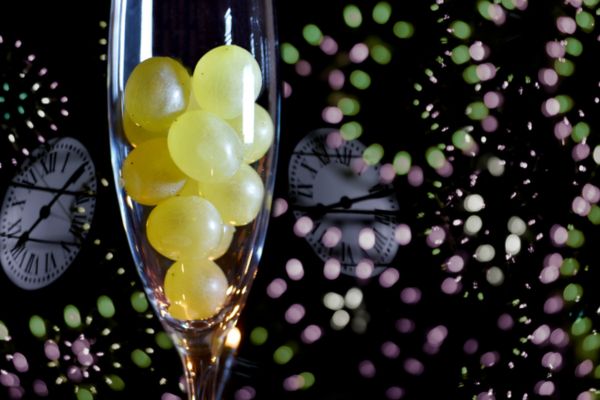These three Spanish Christmas expressions are so popular that we have integrated them into our colloquial language and use them throughout the year.
During Christmas, we Spaniards celebrate the birth of Jesus. The main Spanish Christmas traditions are related to this event, with two of the most important days being December 24 and 25 (Christmas Eve and Christmas Day). January 5 and 6 are also important dates for us. During these two days we commemorate the adoration of the Three Wise Men to the newborn baby Jesus.
And although Christmas in Spain has a strong influence from the Catholic Christian religion, there are also elements that remind us of the presence of Muslim kingdoms in the Iberian Peninsula for eight centuries. For example, the most famous traditional Christmas sweet, the turrón, is of Arab origin.But, when does Christmas officially start in Spain? On December 22, the Christmas lottery is held – the most popular lottery draw in Spain. And for the Spanish, this means that Christmas has begun. It is precisely with a word related to the Christmas lottery, with which we begin with the three Spanish Christmas expressions that we are going to see in this article.

The first of the Spanish Christmas expressions that we are going to see is “tocar(le) el Gordo (a alguien”.
But, what is el Gordo?
The Christmas lottery is the most popular lottery draw in Spain. It took place for the first time on December 18, 1812 in Cádiz. Tickets go on sale in mid-July (in the middle of summer!) and the draw is held every year at the Teatro Real in Madrid.
The number of people who want to witness the draw live is such that people go to the door of the Teatro Real the day before to queue. During the morning of December 22, the children of the Colegio de San Ildefonso sing the numbers and prizes of the lottery. The most anticipated moment is the first prize, which is popularly called el Gordo.
Meaning: we say that le ha tocado el Gordo to someone when they have been very lucky with something or someone.
Examples:

The second of the Spanish Christmas expressions that we are going to see is “armarse el belén”.
Since the Middle Ages, the Catholic religion has been a fundamental pillar of Spanish culture and society. For this reason, many of our Spanish Christmas traditions commemorate important moments in the life of Jesus of Nazareth.
On December 24, the birth of Jesus of Nazareth is celebrated and in Spain, this night is mainly a time to be with the family. The nativity scene (el belén) represents the image of the birth of Jesus of Nazareth in Bethlehem, in a manger, surrounded by his parents (the Virgin Mary and Saint Joseph), the shepherds and the Three Wise Men.
The first representations of the nativity scene have been found in a fresco from the beginning of the 2nd century in the catacombs of Priscilla, on the Via Salaria in Rome, in what is known as Capella Greca.
In 1233, Saint Francis of Assisi arrived in the small Italian town of Greccio, in the Lazio region. Francisco asked Pope Honorio III for permission to recreate with the inhabitants of the place, the first representation of the nativity scene in a cave, near the hermitage of the town.
The first modern form of nativity scene, with painted wooden figures, wearing period clothes, was created by Saint Cayetano de Thiene, in 1534, in Naples.
During the 18th century, Italian manor houses began to install nativity scenes during Christmas. The baroque nativity scenes of Naples were famous, which included religious characters and also famous people from the city.
It was King Carlos III of Spain (1716 – 1788) and his wife, María Amalia de Sajonia, who brought the tradition of the Neapolitan nativity scene to Spain. They built a special room in their palaces for what they called the “Nativity Scene of the Prince”. In the mid-19th century, this tradition spread to Spanish homes.
Nowadays, one of the most popular traditions among the Spanish is to buy nativity scenes figurines at the Christmas markets spread throughout Spain from mid-December.
Meaning: we say that se armó el belén or va a armarse el belén, when we want to express that there has been a mess, a confusing, messy, problematic or difficult issue to resolve.
Examples:

The third of the colloquial Spanish Christmas expressions that we are going to see in this article is ‘dar(le) las uvas (a alguien)’.
December 31 is the last night of the year, New Year’s Eve, and in Spain we celebrate it with family or friends. Our tradition is to have the twelve lucky grapes at midnight, while we listen to the twelve chimes (usually from the Puerta del Sol clock in Madrid).
This tradition dates back to 1909. In December of that year, some viticulturists from the province of Alicante popularised this custom to better sell the excess grape production they had during that campaign. Tradition says that eating these twelve grapes will bring us a new year full of good luck and prosperity.
Meaning: it is said that le van a dar las uvas to someone doing something when it is taking too long to do it. This expression is used by another person to tell the one who is taking too long to finish and/or to hurry up.
Examples:
These Spanish Christmas expressions have a touch of humour, like many colloquial words and expressions that we natives use in our daily lives. Learning to use them in context and conjugating the verbs correctly, will take your Spanish to the next level.
Learn more Spanish Christmas expressions and other curiosities of Spanish, in a well-structured way and with the guidance and experience of an accredited native teacher. I invite you to explore our catalogue of Spanish classes or our Membership Programme. You can book your trial lesson today with us and meet your teacher.
Personally, Christmas is one of my favourite times of the year. I like to spend time with my family and my friends. I also like listening to Christmas carols, walking through the Christmas markets, seeing the lights and decorated streets and watching Christmas movies on the sofa with a blanket and hot tea. The spiritual part of these celebrations is also very beautiful, because Christmas takes place at the end of the year, an ideal time to reflect on the year we left behind and to give thanks for everything we have experienced.
Merry Christmas! ¡Feliz Navidad!
REFERENCES
Sadurní J.M: La tradición del belén de Navidad nació en las catacumbas. National Geographic, 23 de diciembre de 2022.
